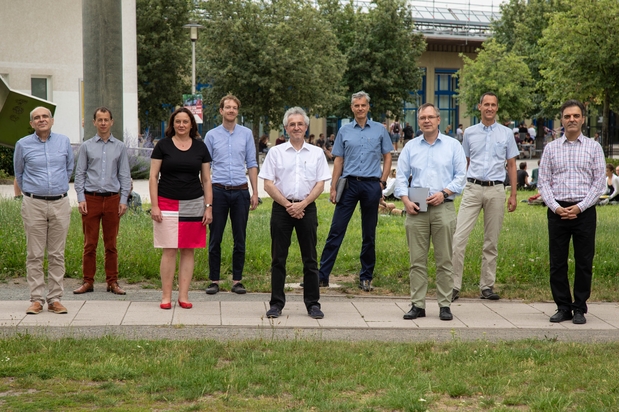SFB/TRR 287 „BULK-REACTION“: Elucidating the Behaviour of High Temperature Particle Processes
In a newly formed collaborative research center, scientists of the Otto-von-Guericke-University Magdeburg and the Ruhr-University Bochum plan to reduce the enormous use of energy and raw materials in industrial particle production processes.
In the new collaborative research center SFB/TRR 287 "BULK-REACTION", the German Research Foundation (DFG) will finance with approximately €10 million over a period of 4 years the development of validated computer simulation tools to enable the understanding and improvement of particle production processes, which are very energy-intensive and inherently difficult to control. Examples of such processes can be found in the production of cement or ceramics in high-temperature ovens, roasting coffee beans, or the drying of pellets and particles, to name just a few. With the newly developed simulation tools, these processes will finally be understood and controllable in such a way, that energy efficiency can be significantly increased and at the same time the required raw material consumption and CO2 emissions can be reduced.
In the newly formed collaborative research center, around 40 scientists from engineering, computer science and physics from the Universities of Magdeburg and Bochum will together develop complex computer simulation tools and validate these using innovative experimental measurement methods in the next four years. Prof. Viktor Scherer, the Chair for Energy Systems and Energy Processes at the Ruhr University in Bochum, and Prof. Dominique Thévenin, Chair for Fluid Mechanics at the Otto von Guericke University in Magdeburg will act as the heads of the research center.
The following groups are involved at the University of Magdeburg (in alphabetical order):
- Prof. Frank Beyrau, Chair of Thermodynamics, Faculty of Process and Systems Engineering, characterizes the temperature and exhaust gas distribution in complex particle beds.
- Prof. Benoît Fond, Working Group for Experimental Thermo-fluids, Faculty of Process and Systems Engineering, develops measurement techniques to better record the gas temperatures and compositions in the interstices of beds.
- Dr. Abdolreza Kharaghani, Working Group for Pore Network Modeling, Faculty of Process and Systems Engineering, measures and models the inner structure of porous particles that are exposed to high temperatures.
- Prof. Christian Lessig, Working Group for Computer Graphics, Faculty of Computer Science, develops simulations for optical measurement methods, which should make it possible to use them even in geometries that are difficult to access, such as particle spaces.
- Prof. Oliver Speck, Chair of Biomedical Magnetic Resonance, Faculty of Natural Sciences, develops magnetic resonance imaging to determine gas velocities in the spaces between particles.
- Prof. Dominique Thévenin, Chair of Fluid Mechanics, Faculty of Process and Systems Engineering, simulates the local velocity, concentration and temperature fields in the particle reactors using Lattice-Boltzmann calculations.
- Prof. Evangelos Tsotsas, Chair of Thermal Process Engineering, Faculty of Process and Systems Engineering, examines the heat conduction through or between particles of complex form via the interstitial gas, the flat contacts and the solid phase.
- Prof. Berend van Wachem, Chair of Mechanical Process Engineering, Faculty of Process and Systems Engineering, performs high fidelity numerical simulations and derives reduced models for describing the flow in large-scale reactors.
- Dr. Katharina Zähringer, Working group for Experimental Fluid Mechanics, Faculty of Process and System Engineering, develops new optical methods for the investigation of the velocity fields in particle spaces.
The combination of numerical simulation methods with new measurement techniques to enable the understanding of high-temperature particle processes will increase product quality, reduce the proportion of rejects and harmful emissions, and at the same time will significantly reduce energy consumption and CO2 emission. The researchers also expect that their work will enable the use of renewable energy sources, such as hydrogen or biomass, for these large-scale industrial production processes in the future. "A central motivation is to reduce our carbon footprint," says Prof. Thévenin. "We can only do that if we fully understand all of the physio-chemical processes."

The involved Project Leaders of the Research Center at the Otto-von-Guericke-Universität Magdeburg (Foto : Stefan Rakebrand, OVGU)
Contact:
Prof. Dr.-Ing. Dominique Thévenin, Chair of Fluid Mechanics and Fluid Dynamics, Faculty of Process and Systems Engineering, Otto von Guericke University Magdeburg, Tel: +49 391 67-58570, E-Mail:





